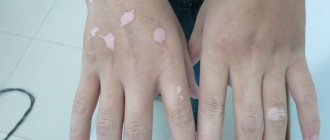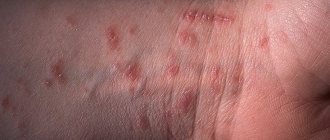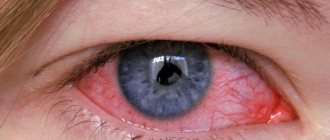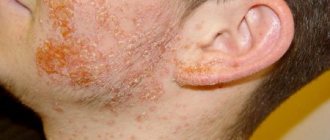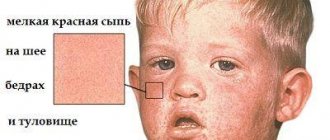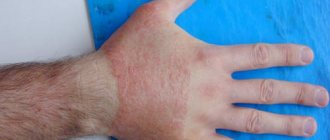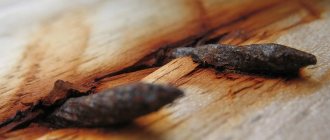Wrist hygroma is a benign formation, which in its characteristics is similar to a cyst. Externally, it is a kind of capsule, which inside is filled with a viscous secretion with fibrin threads (a type of protein compound). The tumor forms in the area of a certain joint, which most often experiences severe physical stress.
Online consultation on the disease “Wrist hygroma”. Ask a question to the specialists for free: Traumatologist, Surgeon.
- Causes
- Symptoms
- Diagnostics
- Treatment
- Traditional methods
- Prevention
In medicine, there are 2 types of hygromas:
- single-chamber;
- multi-chamber.
This distribution depends on the number of capsules that have formed in the formation. As a rule, in most clinical situations, it is single-chamber hygroma of the wrist that develops. Multilocular hygroma is diagnosed only in advanced and severe cases.
Hygroma of the hand most often “attacks” the joints of the hand, wrist or wrist joints. But the most common type of disease is hygroma of the wrist. The disease mainly affects those people who are constantly engaged in monotonous manual labor - violinists, seamstresses, etc.
Hygroma of the wrist joint also often develops. In the early stages of the disease, the cyst may not manifest itself at all. But as the hygroma of the wrist joint grows, it can cause impaired movement of the limb (due to compression of blood vessels and nerves). Most often, this pathological formation affects people of working age - from 25 years.
What is a disease?
Hygroma is a harmless disease that can be quickly cured, but can recur many times. It is a benign formation, the walls of which are formed of hard connective tissue. Inside, the formation is filled with serous transparent or yellowish viscous liquid mixed with fibrin.
Hygroma of the wrist has an oval or round shape. It is most often located in the wrist joint, and can be located both on the outer and on the inner side. The peculiarity of this formation is that it never transforms into a malignant tumor. That is why the treatment of pathology is more likely to have a cosmetic purpose.
How to get rid of a growth on the wrist?
Sometimes a person may develop a lump or “bone” on their wrist. Most often, these people are associated with petty and monotonous work.
For example, violinists, athletes, secretaries, seamstresses, jewelers, embroiderers. This growth is a hygroma.
Hygroma is a benign formation. A growth in the form of a capsule on the wrist, similar to a cyst with serous contents.
Inside the growth there is liquid content mixed with fibrin threads and mucus. Hygroma appears due to constant friction, compression and physical stress in the projection of the joint.
What reasons for development exist?
The following reasons can influence the development of hygroma of the hand:
- frequent injury to the wrist joint of the hand, after which the integrity of the tissue is somewhat compromised;
- a chronic inflammatory process that is localized in the periarticular bursae of the wrist joint;
- inflammation of the ligaments, bursitis and other diseases of the joints and pathologies of the supporting system;
- intense sports activities;
- surgical intervention in the wrist joint of the hand (as a consequence);
- professional activity: hygroma occurs after periodic long-term work at the computer. This pathology is often diagnosed in seamstresses and massage therapists;
- untreated osteoarthritis of the wrist joint in an advanced form.
It is known that the occurrence of the disease is genetic: it can be inherited from parents. Sometimes the causes of the disease cannot be determined.
Wrist hygroma never becomes malignant and causes virtually no discomfort. However, in some cases it can cause pain in the joints of the hand, so treatment is still best.
Hygroma of the wrist joint: diagnostic features
Often people who have this problem do not know which doctor they need to see. To make an accurate diagnosis, it is necessary to consult an orthopedic surgeon. The examination involves an accurate determination of the cause that provoked the disease, as well as methods by which it can be eliminated. The doctor must determine the location of the tumor on the hand, after which its size and other characteristics are determined.
Laboratory tests in this case are useless (except for a biopsy). The following methods are used for diagnosis:
- CT or MRI.
- Ultrasonography.
- In some cases, the contents of the hygroma are punctured for further morphological and cytological examination.
- Radiography.
Types of disease
Hygroma located on the hand can be classified as follows:
- Mucosal hygroma of the wrist. It often appears after the development of deforming arthrosis of the hand. The reason for this is the proliferation of osteophytes, which put pressure on the joint, simultaneously damaging it. For protection purposes, the body begins to build up connective tissue, from which a cyst is formed in the hand. Over time, this cavity fills with viscous liquid.
- Post-traumatic hygroma on the left or right wrist. The cause of its occurrence is considered to be damage to the joint capsule.
- Tendon ganglia. They are formed after a pathological change in the tendon sheath cells occurs. In this case, the wrist moves poorly, and the pathology causes pain.
Treatment of hygroma on the hand can be done in different ways, but the surgical method is mainly used. Unfortunately, it is not able to prevent the recurrence of the formation.
Symptoms, signs and consequences of pathology
Hygroma of the wrist joint is a kind of lump on the wrist, which sometimes hurts and leads to impaired mobility of the joint. But treatment is often performed to eliminate internal discomfort.
Wrist hygroma has the following characteristics:
- It feels elastic and soft to the touch.
- Although the neoplasm is not very mobile, the skin above it moves well.
- The temperature in the area of the wrist joint does not change, the skin has a normal color.
- Hygroma, located on the hand, has clear boundaries and certain dimensions.
- After its appearance, the formation may grow, and the patient feels coldness in the hands and numbness in the fingers.
Consequences of pathology
What is a hygroma of the wrist is already known. Now we need to consider what consequences arise after its appearance. The presented cyst is not life-threatening as long as it is intact. But if it is accidentally crushed, a wound will appear that is susceptible to infection, as a result of which suppuration may develop.
It is not easy to get rid of formations that are located near large vessels. There is a risk of arterial damage. Therefore, the operation must be performed extremely carefully. This is especially important if the disease appears in a child.
Symptoms
Initially, hygroma appears in the form of a slight swelling in the wrist area. But the patient may not pay attention to the bump, mistaking it for a bruise. But the swelling does not go away, gradually increases in size and takes on a rounded shape. When palpated, the liquid part of the hygroma is felt. The disease can become chronic, not grow and not cause concern. But then severe pain may appear at the location of the cystic formation, and an exacerbation will begin.
The main symptoms of wrist hygroma include:
- The appearance of a round-shaped tubercle with a diameter of up to 5 cm;
- Color changes in the dermis over the cyst;
- Impaired sensitivity of nerve endings;
- Pain in the hand area that progresses with exercise;
- Thickening and roughness of the skin.
In medicine, there are cases where hygromas spontaneously opened due to injuries or characteristics of the body. As a result, a large and painful wound may form, from which joint fluid will leak.
If measures are not taken in a timely manner, infection will begin. It can lead to the development of a severe form of the disease.
Hygroma can be diagnosed by palpation. But to clarify, you will need to undergo an ultrasound examination of the wrist and the tissues surrounding it, and take an x-ray. A puncture may be necessary to take a tissue sample for histological examination. Before starting treatment, a medical specialist must exclude the possibility of the formation of a malignant tumor.
Features of treatment of the disease
If your wrist hurts, then to get rid of the discomfort, you need to immobilize the limb. For this purpose, an elastic bandage, splint or splint is used. Exacerbation of the pathology, in which severe pain is felt in the wrist, can be treated with non-steroidal anti-inflammatory drugs, such as Ketorolac, Ibuprofen. If the disease appears in a child, then it must be treated with the utmost care. The operation is rarely performed on children.
If your hand hurts, goes numb and is limited in movement, and the formation itself has greatly increased in size, you should definitely go to the doctor. In this case, surgery will be required to remove the hygroma. Although in most cases, even after this procedure, the cyst may appear again, and the patient again has to see a doctor.
The operation is not complicated. Now you can find and view photos and even videos of it. The intervention involves removing fluid from the cyst cavity using a special needle. All surgical procedures are performed under local anesthesia. After the procedure, the formation cavity must be washed with an antiseptic solution. If a hygroma of the wrist joint was removed, and pus was discovered during the operation, then after the intervention an antibiotic is injected into the cavity of the formation.
After the intervention, a fixing bandage or orthosis is applied to the wrist. Removed in a few weeks. If you do this prematurely, the hygroma may soon appear again.
Both children and adults will benefit from physical therapy. There are good reviews about mud therapy and ultraviolet therapy. If the tumor is small and does not hurt, then it can be treated with hot paraffin baths and electrophoresis using iodine.
Read the article on the topic: Hygroma of the wrist, treatment without surgery.
The indication for surgical intervention is the uneven cellular structure of the formation, as well as its too large size. The operation involves complete removal of the hygroma along with its capsule. Photos and videos of this procedure can also be found and viewed on the Internet.
Laser surgery is considered safer. It is less traumatic for the wrist. In addition to removing the formation with a laser, you can use the endoscopy procedure. The cost of surgery is about 12,000 rubles.
Traditional treatment
Treatment of children and adults is possible with folk remedies. Moreover, you can prepare not only decoctions, but also ointments at home. The following recipes received good reviews:
- tea mushroom. Compresses are made on its basis and applied to the affected area;
- tincture of calendula or iodine. This product lubricates the hygroma;
- wormwood grass. An ointment is made from it. The raw grass should be thoroughly crushed, applied to the wrist and wrapped with a bandage. This compress should be kept all night;
- Kalanchoe and aloe leaves. You can simply apply them to your hand, wrap them with film and a warm scarf;
- decoction of pine branches. To prepare the solution you need 2 kg of raw materials. It should be filled with water and boiled for at least 20 minutes. Pour the liquid into another container and cool to 37 degrees. After this, it is advisable to lower the affected hand into the prepared “bath”. It must be kept for at least 15 minutes;
- alcohol compress. It also has good reviews. To prepare it you need to take 2 parts alcohol and 1 part water. Combine these components, soak a piece of gauze in the mixture, apply it to the tumor and secure with a bandage. The wrist is wrapped in polyethylene and warm soft cloth. You need to keep the compress for at least two hours. It is better to keep the brush motionless. The procedure is repeated every 48 hours.
The course of treatment usually lasts 10 days. Folk remedies are used to treat hygroma of the wrist joint only if it does not hurt and does not limit the movement of the limb.
Prevention of pathology
Hygroma of the wrist is a harmless pathology. But it is unpleasant, as it worsens the appearance of the wrist, and improper treatment can cause complications. Therefore, it is better to prevent the disease. To do this, you need to follow the following recommendations:
- it is necessary to prevent any sports, household or work injuries to the wrist;
- if a person needs to go to training, then he should first protect the wrist with the help of special fixing orthopedic devices;
- If the wrist joint has been damaged, you should immediately consult a doctor who will determine treatment options. At the same time, the recommendations received cannot be ignored;
- it is necessary to combat inflammatory pathologies of the joint in a timely manner;
- an optimally planned work and rest schedule will avoid excessive physical strain on the wrist;
- if a person has a genetic tendency to the appearance of such formations, then he should not choose those areas of activity that require constant tension of the hand or monotonous work with his hands;
- Light gymnastics, which strengthens the joints, will be useful.
Therapeutic techniques
For hygroma, treatment by a specialist is selected individually. For large, painful tumors, surgery is indicated. This is the most effective and safe method, eliminating relapses. It is possible to treat hygroma without surgery: the introduction of special drugs, physiotherapy, traditional methods.
Conservative therapy
If hygroma of the wrist, hand, or fingers was detected at the initial stage of formation, the attending physician prescribes a set of physiotherapeutic procedures along with immobilization of the joint.
How to treat hygroma on the wrist, hand and fingers conservatively:
- A course of electrophoresis with iodine.
- Blockades with a glucocorticoid agent (Diprospan, Hydrocortisone).
- Applications with mud and paraffin.
- Soda and salt baths.
- UHF with deep heating of tissues and improvement of local blood circulation.
- Ultrasound therapy.
- Ultraviolet irradiation.
To ensure immobility and rest in the joint, the patient is given an immobilization bandage for a week: a plaster splint or tight bandage.
If conservative therapy does not produce results, surgical excision of the tumor is indicated.
Surgery
The operation is indicated if the hygroma of the wrist and carpal joint significantly increases in size in a short period of time, causing discomfort and pain.
For surgical removal, one of the following methods is chosen:
- Bursectomy with complete removal of the synovial bursa.
- Laser therapy is heating with a laser beam that completely destroys the tumor. Advantages of the method: eliminates the risk of bleeding and infection, prevents scarring, provides rapid healing of the wound surface, without damaging surrounding tissues.
- Removal using an endoscope.
- Surgical excision of the neoplasm from the affected nearby tissues: removal of the cyst body, isthmus, suturing of the synovial bursa to normal size.
Surgical treatment of hygroma of the hand, fingers and wrist joint has the main advantage: a minimal risk of recurrence. If it is determined that the cause of the tumors is an infectious-inflammatory process, antibacterial and anti-inflammatory drugs are included in the complex treatment.
After conservative treatment, hygroma of the wrist and hand relapses in 90% of cases, and after surgery - only in 10%.
